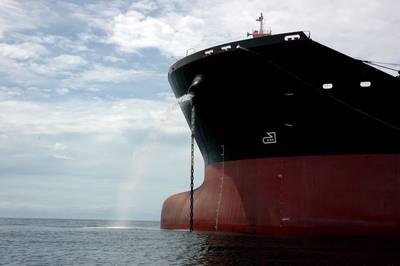US EPA Proposes Changes to Ballast Water Regs
The U.S. Environmental Protection Agency (EPA) is issuing a supplemental proposed rule to reduce the spread of invasive species though ballast water that occurs with normal operation of large marine vessels.
Following public input on EPA’s 2020 proposed rule—including meetings with states, tribes and other stakeholders—the agency is now issuing a Supplemental Notice to share new data and control options raised by stakeholders. This supplemental proposal will bolster the development of a final rule.
“The Biden-Harris Administration recognizes that healthy aquatic ecosystems provide real benefits to communities—they help clean our waters, they support commercial fishing, and they enhance recreation opportunities,” said EPA Principal Deputy Assistant Administrator for Water Bruno Pigott. “This supplemental notice will help EPA develop a stronger final rule to protect our nation’s aquatic resources as Congress intended when it passed the Vessel Incidental Discharge Act.”
EPA’s proposed Vessel Incidental Discharge National Standards of Performance would reduce the environmental impact of discharges, such as ballast water, that are incidental to the normal operation of commercial vessels. The proposed standards would apply discharges to waters of the United States from commercial vessels greater than 79 feet in length; other non-recreational, non-Armed Forces vessels, such as research and emergency rescue vessels; and ballast water only from small vessels (vessels less than 79 feet in length) and fishing vessels of all sizes.
This supplemental notice shares new ballast water information from the U.S. Coast Guard and additional regulatory options EPA is considering for the final rule for ballast tanks, hulls and associated niche areas, and graywater systems. The agency is requesting comments on the issues identified in the supplemental notice during a 60-day public comment period. The public does not need to resubmit comments from the 2020 proposed rule, as the final rule will address comments received on both the proposed rule and the supplemental notice.
Background
Congress passed the 2018 Vessel Incidental Discharge Act to harmonize the patchwork of U.S. Coast Guard, EPA and state vessel incidental discharge permits and regulations. The law requires EPA to develop national standards of performance for discharges incidental to the normal operation of primarily commercial vessels greater than 79 feet in length and for ballast water discharges only from small vessels less than 79 feet in length and fishing vessels of any size. The Vessel Incidental Discharge Act also requires the U.S. Coast Guard to develop corresponding regulations to ensure, monitor, and enforce compliance with EPA’s standards not later than two years after EPA promulgates the national standards.
EPA’s October 2020 proposed rule includes general and specific discharge standards of performance for 20 separate discharges from the equipment and systems onboard vessels. These discharges may contain pollutants such as aquatic nuisance species; bacteria and pathogens; oil and grease; metals; and other toxic, nonconventional and conventional pollutants. EPA’s proposed standards are intended to limit the potential adverse impacts of these discharges on aquatic ecosystems and human health. One such discharge – ballast water – is necessary to maintain the stability of vessels but can contain aquatic nuisance species and facilitate their spread. The EPA and U.S. Coast Guard rulemakings, once final, will improve environmental protection by reducing the volume of pollutants entering the waters of the United States and the contiguous zone.











